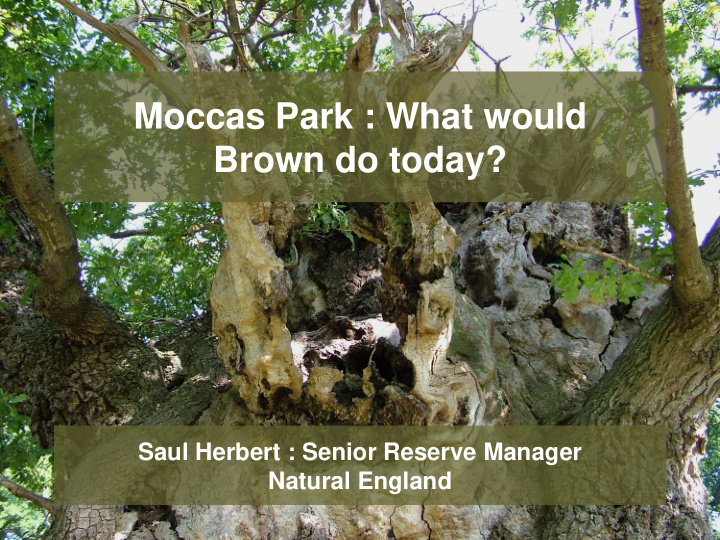



Moccas Park : What would Brown do today? Saul Herbert : Senior Reserve Manager Natural England
Moccas Park 130 ha deer park, plus the Little Park, The Meres and ‘Moccas Hill Wood’ The first Parkland NNR Fungi and lichens Extraordinary invertebrate assemblage Wood pasture birds and bats Birds of prey
Sir George Cornewall 1771 - 1819
“But why may not a whole estate be thrown into a kind of garden. By frequent plantations which may turn as much to the profit, as the pleasure of the owner. Fields of corn make a pleasant prospect, and if the walks were a little taken care of that lie between them, if the natural embroidery of the meadows were helped and improved by some small additions of art, and the several rows of hedges set off by trees and flowers that the soil was capable of receiving, a man might make a pretty landscape of his own possessions.” Joseph Addinson in the ‘Spectator’ 1712.
“I fear those grey old men of Moccas, those misshapen old men that stand waiting and watching century after century, biding god’s time with both feet in the grave and yet tiring down and seeing out generation after generation … No human hand set those oaks. They are the trees which the lord hath planted. They look as if they had been at the beginning and making of the world, and they will probably see its end.” Kilvert – 22 nd April 1876.
Tree age structure – Deer Park Current tree species – Deer Park
Restoring ‘Moccas Hill Wood’
• “Moccas Park has ancient wild - type oaks … each with its distinctive features … anyone wishing to perpetuate the genius loci of Moccas Park into a new generation of trees has to provide separate successors to the Old Man and Club Oaks and the other distinctive oak variants. “ • Oliver Rackham, New Naturalist – Woodlands.
Recommend
More recommend